Taiwan is a wonderful place for outdoor recreation, from surfing to alpine hiking and every recreational activity in between. With many of us enjoying Taiwan’s natural spaces, how can we keep our impact on the environment low while still enjoying the outdoors?
This is a question that I’ve been trying to answer in my eight years hiking in Taiwan. I’ve landed on an answer that has suited me in the form of Leave No Trace (LNT). LNT is built around seven principles of practices and ethics for outdoor recreation. These principles are not fixed rules; rather they are a way to decrease recreational impact on the environment, be aware of other visitors’ experiences and find a way to minimize or avoid impacting the environment and others.
Though you might see signs that display the seven principles of LNT at trailheads, the question remains of how to implement them. I’d been aware of LNT for years but never knew to what extent I could practice the concepts until I took a trainer course last year. Because of this, I’d like to share the principles and give a brief overview of the principles.
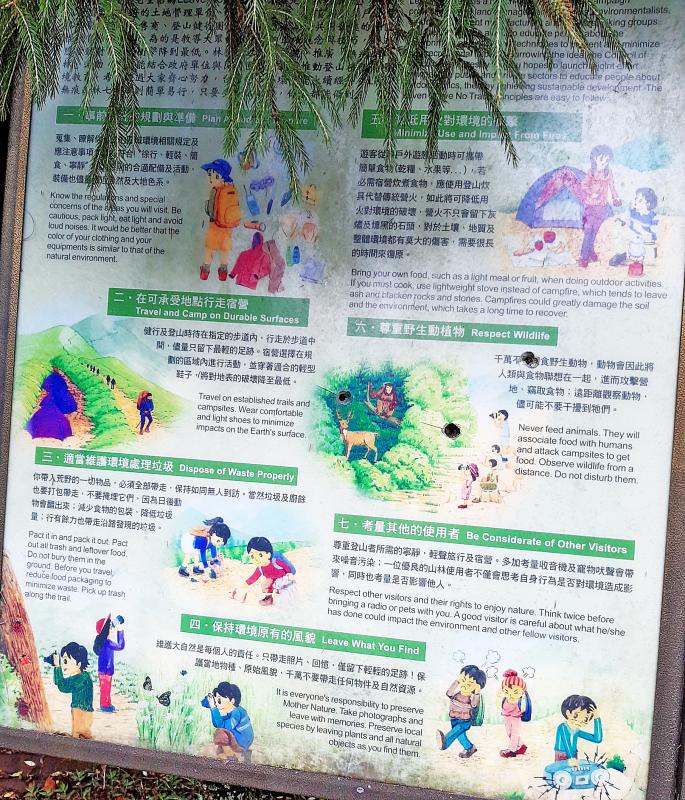
Photo: Stephanie Hammermiller
PLAN AHEAD AND PREPARE
Know about the area you are visiting including weather conditions before you set out. Have enough food, water, clothes and appropriate gear for your planned activity. Make sure your plan is suitable for all members of your group. Have a map of the area. Using a GPS map app can be very helpful with route plotting.
TRAVEL AND CAMP ON DURABLE SURFACES
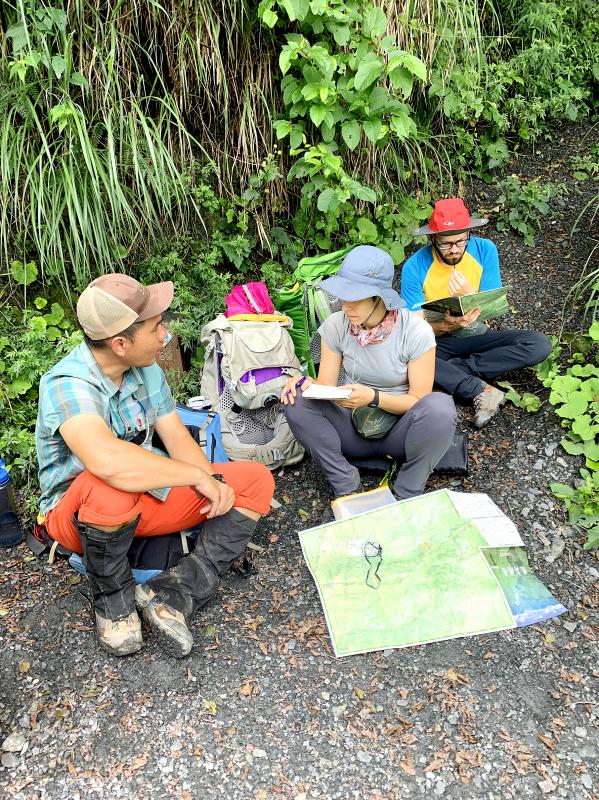
Photo courtesy of Chen Yan-you
When hiking, stay on trail as much as possible. When going off trail, try to stay on rock, gravel or barren soil, and avoid stepping on plants. Remain on the original trail to prevent trail widening and vegetation loss. If there’s a mud puddle in the middle of the trail, walk on through it. Shoes can be cleaned, but vegetation takes years to regrow.
DISPOSE OF WASTE PROPERLY
“Pack it in. Pack it out.” This is a common saying for most North American hikers. Any trash you make on trail, you carry back out. Banana peels, apple cores and other organic matter are trash and are carried out too.
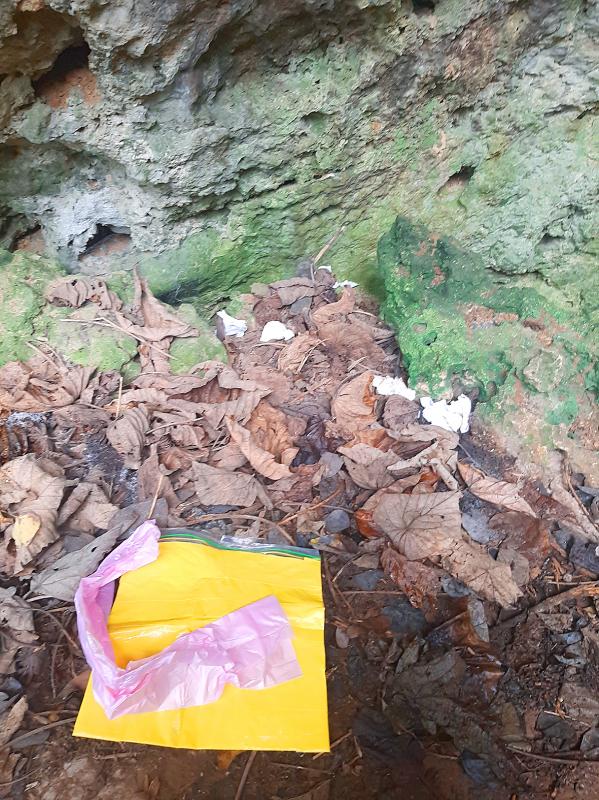
Photo courtesy of Chen Yan-you
Never burn trash. Only bring what you can carry, and opt for simple meals on long section hikes.
For using the restroom outdoors, walk 70+ big steps from water, the trail or campsite. Used toilet paper is packed out. For solid human waste, you can dig a 16-20cm deep, 11-16cm diameter hole and bury it.
In sensitive alpine environments above the treeline, this is not an option. Bring a solid waste bag. I carry a plastic bag that I’ve reinforced with tape and put trash bags inside to use. Use the trash bag to hold the solid waste and seal it in the reinforced plastic bag. Dispose of it properly once you’ve returned from your trip.
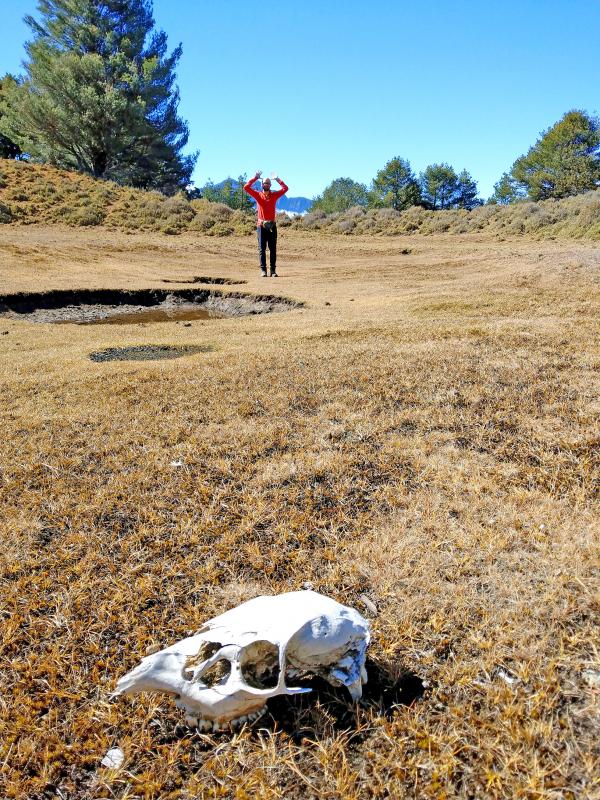
Photo: Stephanie Hammermiller
After using a solid waste bag on a trip, my partner and I realized how effective and easy it is, so now we always carry one (or two).
LEAVE WHAT YOU FIND
When hiking, take photos of all the wonderful sights you see. Leave antlers, bones, plants, animals and historical artifacts as you find them so that the next hiker who passes through may experience them. Find a campsite; don’t build one. Allow others to enjoy the thrill of the untouched natural beauty of the area once you’ve moved on.
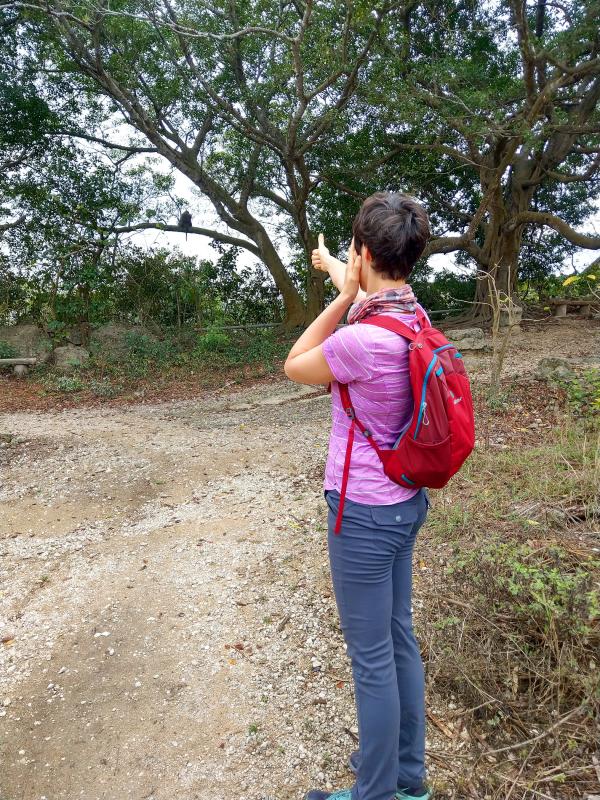
Photo courtesy of Daniel Posch
MINIMIZE IMPACT OF CAMPFIRES
Use a camp stove for cooking. In alpine areas, above the treeline, stoves are the only option for cooking. Fires are very damaging in alpine environments.
My partner and I often eat dry food for lunches and cook a simple stove meal for dinner. It saves time, requires less effort and leaves no trace.
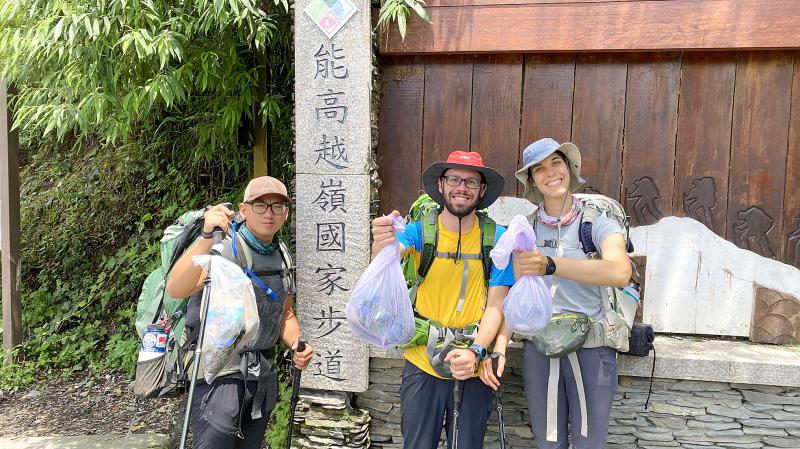
Photo courtesy of ZA Adventure Studio
RESPECT WILDLIFE
If an animal changes its behavior due to your presence, you’re too close. Respect wildlife by observing from a distance.
To remain wild, animals need to find their own food in their environment. Never feed animals. To prevent them from coming into contact with your food, always keep your food packed away when you’re not eating and carefully clean up any crumbs or spills.
A good rule of thumb (literally) is to stick your arm straight out in front of you and stick up your thumb. Close one eye and put your thumb over where the animal is. If the animal is bigger than your thumb, you’re too close and could alter its behavior with your presence. If your thumb completely obscures the animal, then you’re probably at a safe distance as long as the animal isn’t changing its behavior.
BE CONSIDERATE TO OTHER VISITORS
When we recreate outdoors, other people are enjoying these spaces with us, and everyone is looking for a different experience. One way to be considerate on trail is to yield to uphill hikers by stepping aside on a durable surface. Radios disturb others who are going outdoors to enjoy the sounds of nature. So another simple thing to do is to listen to music with headphones. I am appreciative when a fellow hiker opts for headphones.
REFLECTING ON PRACTICING LNT
After learning how to practice LNT, my partner and I have experienced first hand how satisfying it is to have a more respectful relationship with nature. Now we are doing our best to implement the principles and are still learning new ways to minimize and eliminate our impact on trail.
ADDITIONAL INFO
This article only scratches the surface of the principles. For more information visit www.lnt.org. There, you’ll not only find more specific info, but also LNT for different outdoor activities.
To take a trainer course in Taiwan you can contact ZA Adventure Studio at (Chinese and English): www.zaadventure.com. My partner and I took the Mountain Leader Skills + LNT Trainer Course and both highly recommend it.

On April 26, The Lancet published a letter from two doctors at Taichung-based China Medical University Hospital (CMUH) warning that “Taiwan’s Health Care System is on the Brink of Collapse.” The authors said that “Years of policy inaction and mismanagement of resources have led to the National Health Insurance system operating under unsustainable conditions.” The pushback was immediate. Errors in the paper were quickly identified and publicized, to discredit the authors (the hospital apologized). CNA reported that CMUH said the letter described Taiwan in 2021 as having 62 nurses per 10,000 people, when the correct number was 78 nurses per 10,000

As we live longer, our risk of cognitive impairment is increasing. How can we delay the onset of symptoms? Do we have to give up every indulgence or can small changes make a difference? We asked neurologists for tips on how to keep our brains healthy for life. TAKE CARE OF YOUR HEALTH “All of the sensible things that apply to bodily health apply to brain health,” says Suzanne O’Sullivan, a consultant in neurology at the National Hospital for Neurology and Neurosurgery in London, and the author of The Age of Diagnosis. “When you’re 20, you can get away with absolute

May 5 to May 11 What started out as friction between Taiwanese students at Taichung First High School and a Japanese head cook escalated dramatically over the first two weeks of May 1927. It began on April 30 when the cook’s wife knew that lotus starch used in that night’s dinner had rat feces in it, but failed to inform staff until the meal was already prepared. The students believed that her silence was intentional, and filed a complaint. The school’s Japanese administrators sided with the cook’s family, dismissing the students as troublemakers and clamping down on their freedoms — with

As Donald Trump’s executive order in March led to the shuttering of Voice of America (VOA) — the global broadcaster whose roots date back to the fight against Nazi propaganda — he quickly attracted support from figures not used to aligning themselves with any US administration. Trump had ordered the US Agency for Global Media, the federal agency that funds VOA and other groups promoting independent journalism overseas, to be “eliminated to the maximum extent consistent with applicable law.” The decision suddenly halted programming in 49 languages to more than 425 million people. In Moscow, Margarita Simonyan, the hardline editor-in-chief of the